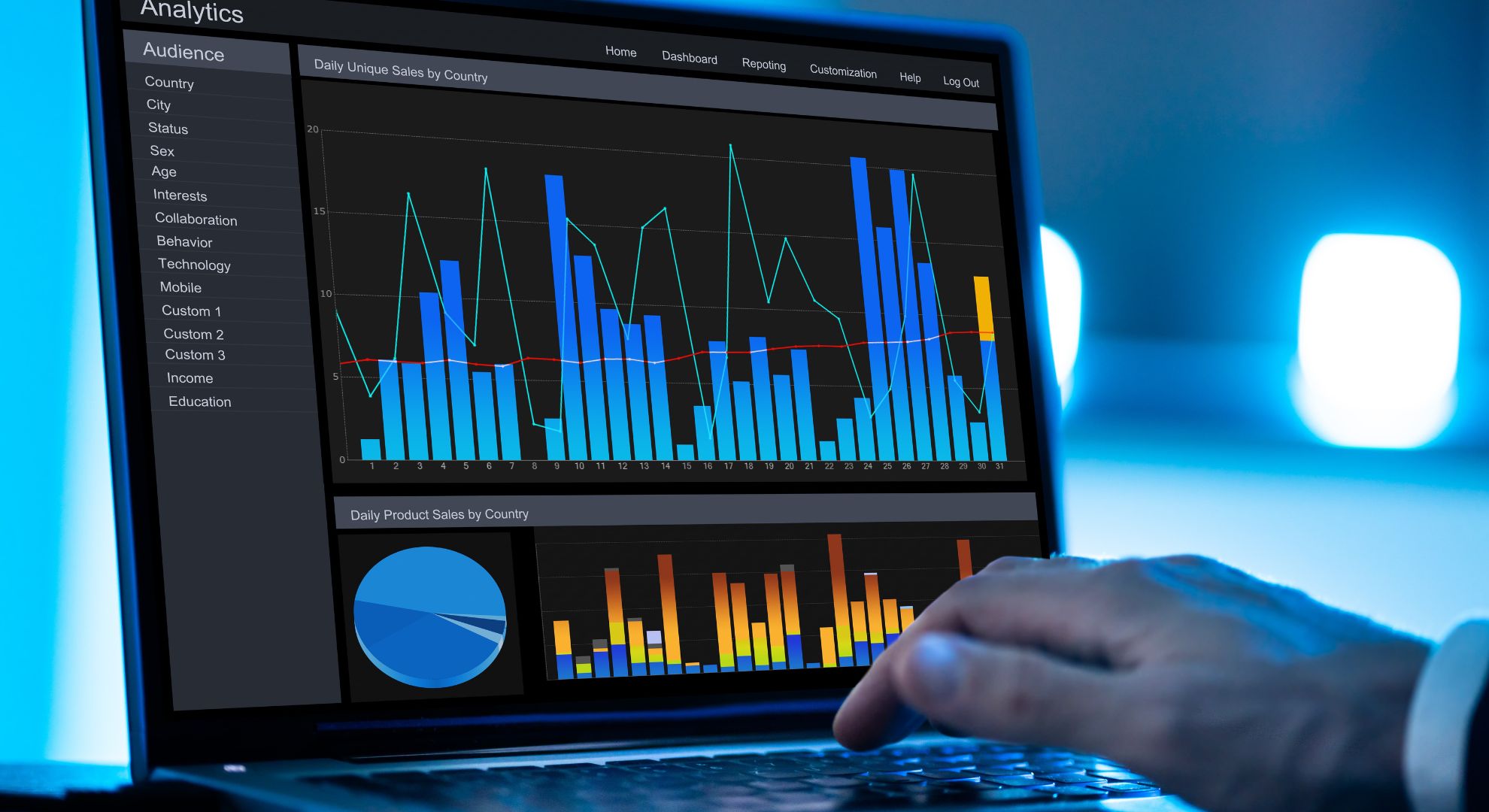
In the dynamic world of modern business, gaining a competitive edge is crucial. One transformative strategy leading the charge is integrating predictive analytics into business operations. “Business with Predictive Analytics” is not just a concept; it’s a game-changer. This cutting-edge technology, fueled by advanced algorithms and machine learning, analyzes historical data to forecast future trends accurately. Predictive analytics empowers organizations to anticipate and shape future scenarios unlike traditional business intelligence. In this exploration, we delve into the profound impact of predictive analytics on businesses, unravelling its potential to revolutionize decision-making, optimize strategies, and propel enterprises into a new era of success.
Demystifying Predictive Analytics
Predictive analytics is an advanced branch of analytics that utilizes historical data, statistical models, and machine learning predictions to identify trends and forecast future events accurately. Unlike traditional business intelligence solutions that primarily focus on reporting past occurrences, predictive analytics empowers organizations to anticipate future scenarios, enabling proactive decision-making and strategic planning.
At its core, predictive analytics harnesses the power of data mining algorithms, predictive modelling techniques, and optimization algorithms to extract valuable insights from structured and unstructured data sources. Businesses can identify patterns, relationships, and correlations that would otherwise remain hidden by analyzing this data. These insights help make strong forecasting models and decision support systems, which let businesses make choices based on data and take proactive steps to reduce risks and take advantage of opportunities.
Unleashing the Potential of Predictive Analytics

In many different fields, predictive analytics is used in many different ways, which is excellent for businesses that use this technology. Here are a few critical areas where predictive analytics can make a huge difference:
- Demand Forecasting and Supply Chain Optimization: Accurately predict future demand for products or services, enabling optimal inventory management, efficient resource allocation, and streamlined supply chain operations.
- Customer Segmentation and Churn Prediction: Identify high-value customers, understand their preferences and behaviours, and predict which customers are at risk of churning, allowing for targeted retention strategies and personalized marketing efforts.
- Risk Analysis and Fraud Detection: Assess potential risks and vulnerabilities, detect fraudulent activities, and implement preventive measures to mitigate losses and protect your business from threats.
- Predictive Maintenance: Leverage sensor data, machine learning predictions, and prescriptive analytics solutions to anticipate equipment failures and schedule timely maintenance, minimizing downtime and reducing operational costs.
- Marketing Campaign Optimization: Analyze customer data, behaviour patterns, and sentiment analysis to personalize marketing campaigns, improve targeting, and maximize return on investment (ROI).
- Product Recommendations and Personalization: Enhance the customer experience by offering customized product suggestions based on past purchases, browsing habits, and sentiment analysis.
Harnessing the Power of Predictive Analytics Software
Businesses need to invest in robust predictive analytics software and prescriptive analytics tools to implement predictive analytics. These state-of-the-art solutions have advanced algorithms, the ability to visualize data, and easy-to-use tools that help businesses get helpful information from their data and make intelligent choices.
Leading predictive analytics software providers offer comprehensive features, including data integration, mining, predictive modelling, scenario analysis, and reporting capabilities. Additionally, many solutions incorporate prescriptive analytics capabilities, which go beyond forecasting by recommending optimal actions or decisions based on the predicted outcomes.
Embracing a Data-Driven Culture

Implementing predictive analytics is not merely about acquiring the right technology; it also requires a fundamental cultural shift within the organization. Businesses must embrace a data-driven mindset and foster an environment encouraging data-driven decision-making.
This transformation involves several key elements:
- Data Governance involves establishing robust policies and procedures to ensure data quality, consistency, and security across the organization.
- Data Literacy: Giving all company training and educational materials to improve data literacy will give workers the tools to understand and use data to make decisions.
- Cross-functional collaboration: Encouraging collaboration between departments, such as IT, analytics, and business units, to leverage diverse perspectives and expertise, fostering a holistic approach to data-driven initiatives.
- Continuous Improvement: Regularly evaluate and refine predictive models, seek opportunities to incorporate new data sources and emerging technologies, and continuously adapt to changing business conditions and market dynamics.
Investing in Talent and Expertise
Predictive analytics requires specialized skills and expertise. Businesses should think about investing in skill development and training programs to get the most out of this powerful technology. This can involve hiring data scientists, analysts, and domain experts with the necessary technical and analytical capabilities to effectively design, implement, and interpret predictive models.
Additionally, organizations can explore partnerships with predictive analytics consulting firms or academic institutions to access cutting-edge research, best practices, and specialized knowledge. Such collaborations can accelerate the adoption of predictive analytics and ensure that businesses remain at the forefront of innovation.
Real-World Examples and Use Cases
Predictive analytics has already proven its value across various industries, driving transformative results for businesses embracing this technology. Here are a few real-world examples and use cases:
- Retail and E-commerce: Leading retailers leverage predictive analytics to forecast demand, optimize inventory levels, personalize product recommendations, and identify customers at risk of churning, enabling targeted retention strategies.
- Healthcare: Predictive analytics is revolutionizing healthcare by enabling early disease detection, predicting patient readmissions, optimizing resource allocation, and improving treatment outcomes through personalized medicine.
- Financial Services: Banks and financial institutions utilize predictive analytics for credit risk assessment, fraud detection, customer segmentation, and investment portfolio optimization, mitigating risks and maximizing profitability.
- Manufacturing: Predictive maintenance and supply chain optimization are critical applications of predictive analytics in the manufacturing sector. They reduce downtime, improve efficiency, and ensure timely product delivery.
- Transportation and Logistics: Predictive analytics is pivotal in route optimization, demand forecasting, and predictive maintenance in the transportation and logistics industry, enhancing operational efficiency and customer satisfaction.
Future-Proofing Your Business

In the rapidly evolving business landscape, predictive analytics offers a powerful tool to future-proof your organization. With data, advanced algorithms, and machine learning, you can find valuable things, guess what will happen in the future, and make intelligent decisions that will help your business grow, lower risks, and stay ahead of the competition.
Embrace predictive analytics today and position your business for long-term success in an ever-changing market. This tool can help you figure out new ways to make money, stay ahead of the competition, and protect your business for the future.
FAQ’s
What is predictive analytics, and how does it differ from traditional business intelligence?
Predictive analytics is an advanced form of analytics that uses historical data, statistical models, and machine learning to forecast future events accurately. Unlike traditional business intelligence, which focuses on reporting past occurrences, predictive analytics enables organizations to anticipate and shape future scenarios for proactive decision-making.
How can predictive analytics benefit businesses in demand forecasting and supply chain optimization?
Predictive analytics empowers businesses to accurately predict future demand for products or services. This enables optimal inventory management, efficient resource allocation, and streamlined supply chain operations, ensuring a competitive edge in the market.
What role does predictive analytics play in customer segmentation and churn prediction?
In customer segmentation, predictive analytics helps identify high-value customers, understand their preferences, and predict potential churn risks. This allows businesses to implement targeted retention strategies and personalized marketing efforts to enhance customer loyalty.
Why is a data-driven culture essential for the successful implementation of predictive analytics?
Implementing predictive analytics requires more than just technology; it necessitates a cultural shift toward a data-driven mindset. This involves establishing data governance, promoting data literacy, encouraging cross-functional collaboration, and fostering continuous improvement in predictive models.
Can businesses in different industries benefit from predictive analytics, and are there real-world examples?
Yes, predictive analytics is versatile and beneficial across various industries. Real-world examples include its application in retail for demand forecasting, healthcare for early disease detection, financial services for fraud detection, manufacturing for predictive maintenance, and transportation/logistics for route optimization and demand forecasting.
